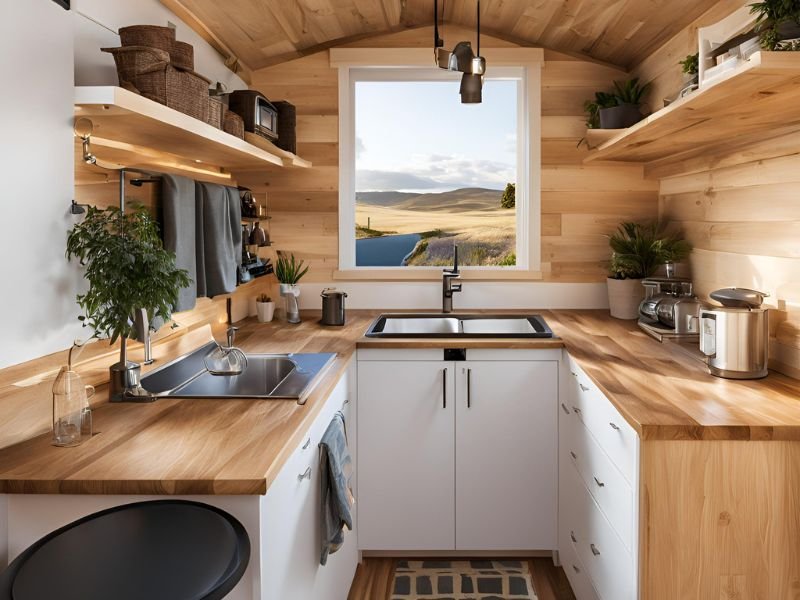When you’re looking at legal obstacles for tiny homes, be ready to tackle zoning regulations, building codes, property tax implications, insurance considerations, and HOA restrictions. These hurdles can greatly influence your tiny home journey.
Key Takeaways
- Zoning regulations dictate where tiny homes can be placed, impacting their feasibility in different areas.
- Meeting building codes and permits is challenging due to square footage requirements and safety standards.
- Property tax implications affect overall cost and financial planning, with potential tax adjustments as property value increases.
- Insurance costs vary based on location and coverage, with considerations for custom-built components or off-grid setups.
- HOA restrictions may include strict architectural rules, size limitations, and conflicts with tiny home customization.
Zoning Regulations for Tiny Homes

Understanding zoning regulations for tiny homes is crucial for aspiring homeowners. Factors to consider include parking requirements, setback rules, occupancy limits, and size restrictions. These regulations dictate where and how tiny homes can be situated, impacting their feasibility in various areas.
Parking requirements may necessitate designated spaces for tiny homes, while setback rules determine the distance a tiny home must be from property lines. Occupancy limits and size restrictions can affect the design and layout of the tiny home to comply with local zoning laws.
Ensuring compliance with these regulations is essential to avoid potential legal issues and fines.
Building Codes and Permits
Understanding building codes and obtaining permits is a vital step in the process of establishing a tiny home, guaranteeing compliance with legal requirements and safety standards. Construction challenges may arise when adapting to these regulations due to the unique nature of tiny homes.
Permit requirements vary by location but generally involve submitting detailed plans, demonstrating compliance with building codes, and paying associated fees. It’s essential to research and comprehend the specific building codes and permit procedures in your area to avoid delays or fines.
Some common construction challenges include meeting minimum square footage requirements, ensuring proper ventilation, and complying with safety standards for electrical and plumbing systems. By addressing these requirements diligently, you can confirm your tiny home is legally sound and safe for habitation.
Property Tax Implications
When it comes to tiny homes, property tax implications can greatly impact your overall cost and financial planning. Understanding how property taxes apply to your tiny home is important.
Some areas offer tax exemptions for tiny homes, helping to reduce the financial burden. These exemptions can result in significant savings over time, making tiny homes a more attractive option.
Additionally, considering the investment potential of your tiny home is crucial. As the value of your property increases, so may your property taxes. It’s important to factor this into your financial calculations to make sure you’re prepared for any potential tax adjustments.
Read More:
- What Are Solutions to Tiny Home Legal Issues?
- 5 Legal Solutions for Tiny Home Challenges
- 3 Best Ways to Navigate Tiny Houses Construction Laws
Insurance Considerations
Understanding insurance considerations for your tiny home can be an essential aspect of protecting your investment and ensuring financial security.
When it comes to insuring your tiny home, premium costs may vary depending on factors such as the value of your home, its location, and the coverage options you choose.
Due to the unique nature of tiny homes, some insurance companies may have coverage limitations, so it’s important to carefully review the policy to make sure it meets your needs.
Be aware that certain features of tiny homes, like custom-built components or off-grid setups, might require additional coverage or could impact premium costs.
HOA Restrictions and Challenges
Understanding HOA restrictions and challenges can present significant obstacles for tiny homeowners seeking to establish their dwellings within community guidelines and regulations. When it comes to architectural design, many HOAs have strict rules governing the style and appearance of homes within their jurisdiction. This can be problematic for tiny homeowners who may want to customize their homes to maximize space efficiency.
Size limitations are another common issue faced by tiny homeowners living in HOA-regulated communities. Many HOAs have minimum size requirements for homes, which can directly conflict with the tiny home lifestyle. Addressing these restrictions and challenges requires careful planning and communication with the HOA board to find solutions that satisfy both parties.
Conclusion
To sum up, tiny homes encounter legal hurdles in the form of zoning regulations, building codes, property tax implications, insurance considerations, and HOA restrictions. Tackling these challenges demands thorough planning and research to guarantee compliance with local laws and regulations.
By understanding and addressing these obstacles, tiny home owners can enjoy the benefits of simple living while avoiding potential legal issues. Stay informed, stay prepared, and keep dreaming big in your tiny home journey!
Read More:
